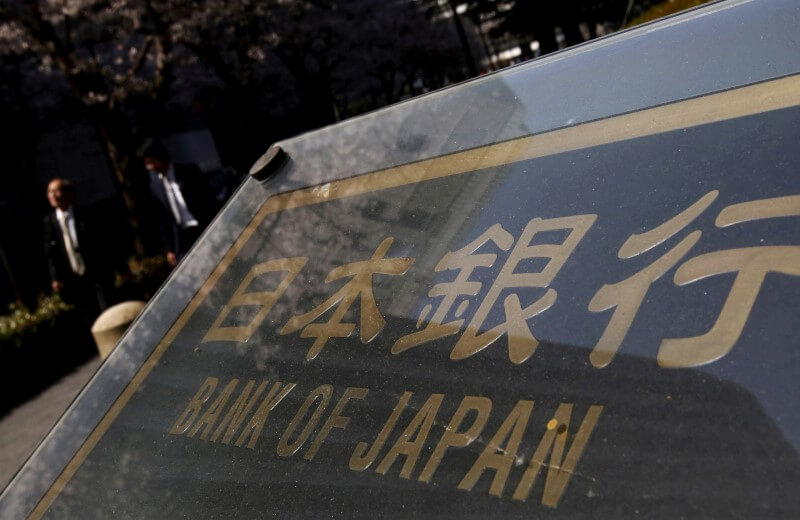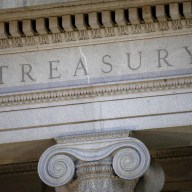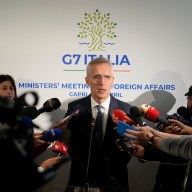By Leika Kihara
TOKYO (Reuters) – A renewed spike in the yen is adding to headaches for Bank of Japan policymakers meeting for a rate review this week, but many of them still appear to prefer to hold off on expanding stimulus despite signs of weakening inflation. While a possible British vote to leave the European Union is the biggest near-term concern for BOJ officials, they also see it as reason to hold fire until after the June 23 referendum.
The bigger problem for the BOJ is a weakening price trend that is stoking fears Japan may revert to the years when widespread deflationary sentiment discouraged companies from raising prices and enfeebled the economy. But growing doubts, including from prominent overseas investors, over the feasibility of expanding quantitative easing or deepening negative interest rates are complicating the BOJ’s efforts to shake off deflation with heavy money printing. “Investors, both local and overseas, have become increasingly pessimistic about the central bank’s ability and willingness to ease monetary policy again,” said Mansoor Mohi-Uddin, senior market strategist at RBS. The BOJ is likely to keep policy steady at the two-day rate review ending on Thursday, Reuters polls showed, as many policymakers want more time to scrutinise the effect of January’s surprise decision to adopt negative interest rates. But BOJ Governor Haruhiko Kuroda may surprise markets by easing if the yen continues its ascent, though it will take a yen spike well above 105 to the dollar for this to happen, analysts say.
The decision may also be affected by the U.S. Federal Reserve’s rate decision and policy comments a day before the BOJ’s.
The dollar slid to 105.86 yen on Monday, its lowest since May 3, as investors bought the safe-haven yen on Brexit fears.
A Reuters poll showed economists see a higher chance of the BOJ easing at its meeting on July 28-29, when it issues fresh quarterly growth and inflation forecasts.
The British referendum on Brexit, as well as Japan’s upper house poll on July 10, will be over by then.
The BOJ will also have more data to check corporate price-setting behavior such as its “tankan” quarterly business sentiment survey due on July 1.
BOJ IN A BIND
The BOJ is caught in a bind. Despite nearly three years of aggressive money printing, Japan’s economic activity remains uninspired and inflation has ground to a halt on weak consumption and exports. Almost all key indicators the BOJ had used to explain that its stimulus was succeeding, such as its inflation index that strips away the effect of energy costs, are now weakening.
While Kuroda argues he has plenty of ammunition to ease further, there are doubts on what more he can deliver and whether it will be any more successful than earlier stimulus efforts. The BOJ already holds a quarter of Japan’s government bond market and its negative rate policy has drawn criticism from banks for confusing rather than calming markets. Some BOJ board members, including Takehiro Sato, have openly questioned the feasibility of sticking with the bank’s 2 percent inflation target, which has already been pushed back several times, most recently to early 2018. Foreign investors are also bailing out of Japanese stocks on disillusionment about premier Shinzo Abe’s “Abenomics” stimulus policies, which may diminish any positive market reaction to further BOJ easing. Kuroda, however, is unfazed and will probably deploy a combination of increased purchases of government bonds and riskier assets with further rate cuts if needed, said Mari Iwashita, chief market economist at SMBC Friend Securities. “The success of QQE with negative rates is probably written down in Kuroda’s economics textbook,” she said. “I don’t think he will stop just because it’s not working.” The BOJ added negative rates in January to its massive asset-buying program, dubbed “quantitative and qualitative easing” (QQE), in a fresh effort to accelerate inflation toward its 2 percent target. (Editing by Kim Coghill)
Yen, Brexit, inflation keep BOJ on edge, but policy seen steady for now

By Leika Kihara















